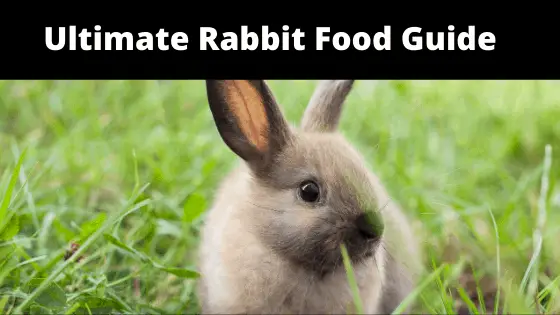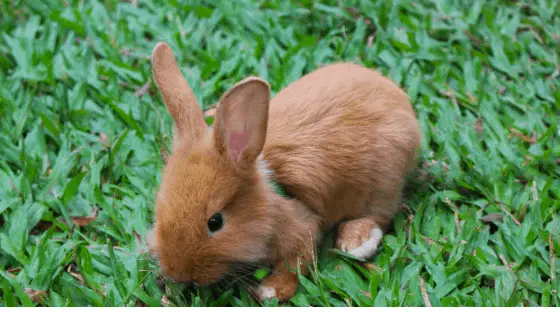As a general rule Rabbit food is a very Vital Part of Rabbit Farming. According to the University of Michigan account for 75% of the Costs associated with rabbit Farming. An adult rabbit will need 1/4 to 1/2 cup of Rabbit pellets per 6 pounds of body weight per day. Rabbits can be fed natural foods. Rabbits can be fed commercial foods, Rabbits can be fed with Homemade feed.
Rabbit Foods – History of Domesticating Rabbits
Rabbit Foods – According to Dr. Greg Larson from Oxford – Earliest written records of Romans raising and Building Hutches for Rabbits. All Through Time Rabbits were Used and Hunted as a meat source. Tradition says that Fransciscian Monks were Raising them for Meat ( Domesticating them ) during Lent in 600 AD – But this tradition lacks supportive Documentation
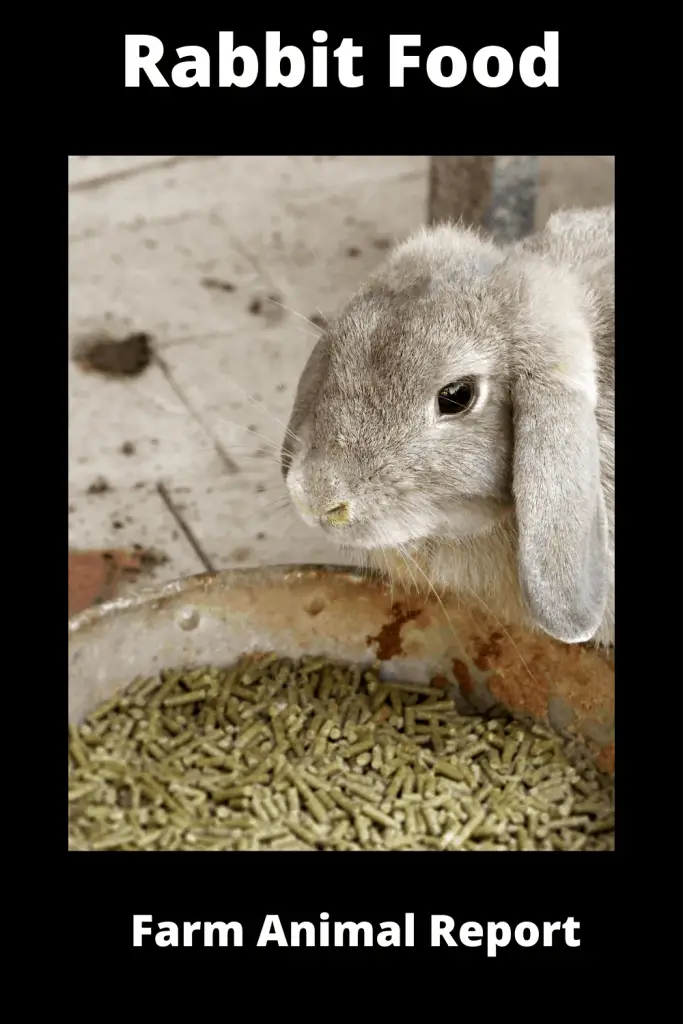
If you look at today’s Commercial Rabbit Farms. It is amazing the Technology and Science that has been added. From the time the Bunny Hopped around Munching Grass. To the Science-Based Diets that are now available for growing Strong, Quick and Healthy Rabbit Herds
You can also Read our Guide –18 Ways to Make Money by Rabbit Farming—Extensive Guidelines for Rabbit Farmers
Rabbit Farming Today
According to the 2002 Census of Agriculture NASS – there were 4,300 Farms – Selling 890,000 Rabbits Annually. Top producer in the US was Pennsylvania with 298 Farms with a production of Selling 112,00 Annually
Check Out Amazon for Resources about Breeding Rabbits
Today Rabbit Farming is becoming more popular as an Animal on Small Family Farms. Being able to start a small rabbit Farms reasonably. We did it as a Kid. My Father was Raising Rabbits on our small 5 Acre Farm. We built Hutches and Had small litters having about keeping about 30 Rabbits in Rotation to provide the meat for our Family and friends. As Kids it was a great Learning Experience and Responsibility Growing Up. We Raised them and then as 12 – 14-year-old boys we would Put them into Freezer. We loved Rabbit Meat. When we had friends over they didn’t have a clue to the type of Meat. they just knew it Tasted Delicious.
Smallest Operations to be considered a herd – 20 Does and 2 Bucks
Current Part-Time Farms consist – 50 – 100 Rabbits
Full-Time Farms Consist – 600 Females – 60 Bucks
Each doe will produce 25 – 50 Rabbits per Year – Which Yields 125lbs – 250lbs of Meat.
These are the most popular Breeds That are Currently Being Farmed
| Breeds | Size | Use | Mature Weight (lbs) |
|---|---|---|---|
| Angora | medium | wool; meat | 9-12 lbs |
| American Chinchilla | medium | fur | 9-12 lbs |
| Californian | medium | meat | 8-11 lbs |
| Champagne d’Argent | medium | meat | 9-12 lbs |
| Checkered Giants | large | fur | 11+ lbs |
| Dutch | small | lab | 3-6 lbs |
| English Spot | medium | meat; lab | 9-13 lbs |
| Flemish Giants | large | meat | 13+ lbs |
| Himalayan | small | lab | 2-6 lbs |
| New Zealand | medium | meat | 9-12 lbs |
| Polish | small | lab | 3-4 lbs |
| Rex | medium | fur | 8-11 lbs |
| Silver Martens | medium | fur | 6-10 lbs |
What Rabbits Eat Naturally
As we begin looking at the subject of Rabbit Feeding – Let’s begin with Looking at what Rabbits eat in Their Natural Habitat. Wild Rabbits have always been a hunted Food Source. In Part of the United States, we live they are called Cotton Tails – Because when they are running away usually all you can see is their white Puffy Cotton Tail. In Ohio, there is a Scheduled Hunting season Every Year. Looking at what they eat Naturally in the wild is below.
- In the Summer – Weeds
- Grasses
- Clover
- Flowers
- Vegetables
- In the Winter – Twigs
- Bark
- Pine Tree Needles
- Any Plants that remain Green in the Winter
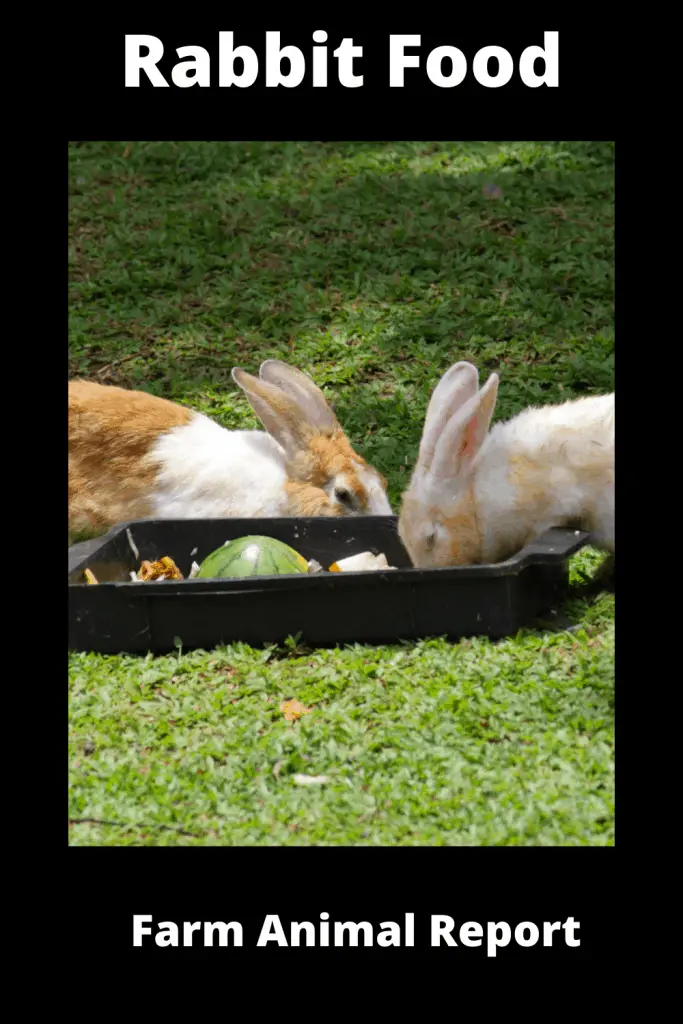
Homemade Rabbit Food
You may want to Feed Your Rabbit farm Homemade Rabbit food so you can better control what they are getting. You can use the freshest ingredients. It is more labor-intensive – we will share a couple of Recipes we found during Research – Checking with a Veterinarian follow these guidelines – for Rabbit Foods
- 85% Grass – Fresh Greens
- 15% Commercial Feeds that have 16% crude protein Levels
- 6 Cups of Rolled Oats
- 3 Cups Golden Wheat Berries
- 3 Cups Barley
- 3 Cups Hard Red Wheat Berries
- 3 Cups Split Peas
- 3 Cups Sunflower Seeds
Recipe 2 – This Link has several Rabbit Farmers Homemade recipes – this one looked great and the Farmer said it has produced strong Healthy Rabbits on His farm – if You look at Herbs he has included you can see, Natural Antibiotics, Parisite control, Natural Immunity Builup, Better Absorption ingredients.
- 50 KG of Barley
- 50 KG of Corn
- 20 KG Smooth Lentiles Hay
- 20 KG Bran
- 5 KG Soybean Powder
- 200 Grams Tumeric Powder
- 50 Grams Salt
- 200 Grams Mugwort powder
- 200 Grams Onion Powder
- 200 Grams Garlic Powder
- 100 grams Fenugreek Powder
- 100 grams Black Pepper
Building your own Homemade Foods is that it allows you to add many natural Herbs that help promote immunity, parasite control, General Health of the Rabbit. Gives you More control for your Rabbit farm
Home-mixed Feed – Our Starting a Rabbit Farm – Article
Rabbits can feed almost any food that is not sour, spoiled, or greasy. Some exceptions are meat, potatoes, peeling potatoes and large amounts of cabbage. Thus, rabbit food can be supplemented with many things, including vegetable trimming, fruit peeling, bread scales, sun-dried remaining rice, and leftovers milk.
Rabbits can be fed almost any food that is not sour, spoiled, or greasy. A few exceptions are meat, potatoes and/or potato peelings, and large amounts of cabbage.
Thus, the rabbit’s diet may be supplemented with many things, including vegetable trimmings, fruit peelings, bread crusts, and sun-dried leftover rice and leftover milk.
Do Rabbits Eat Pineapple
Yes, Rabbits can eat small amounts of Pineapple. Pineapple in large amount are not healthy for rabbits. In Nature they normally do not eat Pineapple, and the high Sugar Content of Pineapple is not good for your Herd. Resulting in sugar problems and possible obesity.
Vitamin C is a Benefit that comes from Eating Pineapple, but there are also Green Sources that would be closer to the Bunny’s Natural Food Sources.
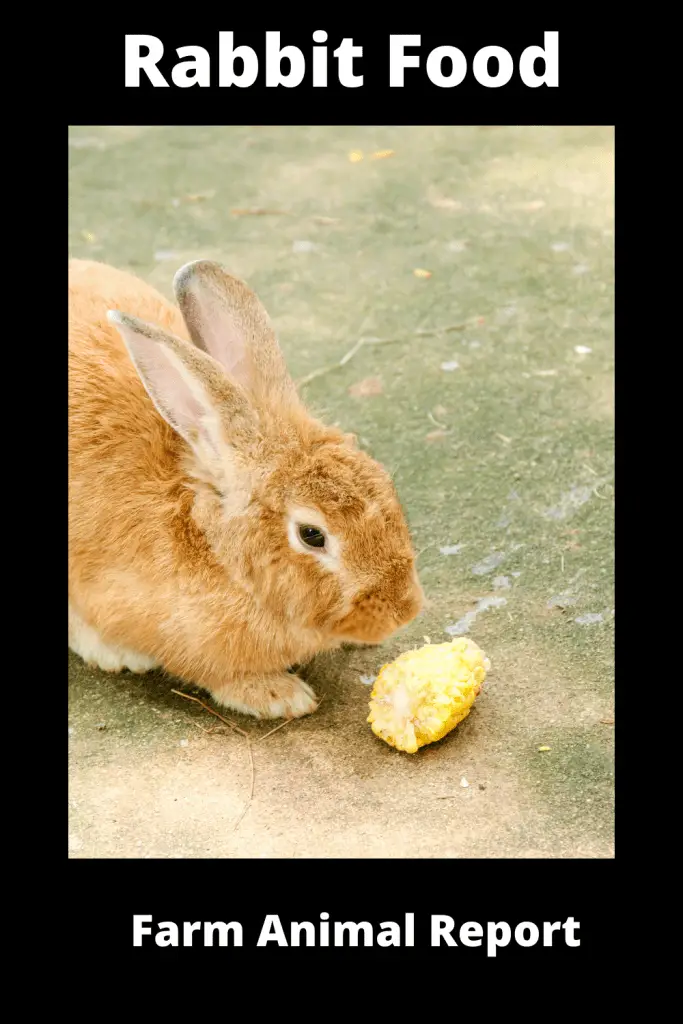
Suggested Feed Recommendations Michigan University
Here are some of the basic ingredients you can use in your feeding formulas. These are Fresh main staples for your Rabbit Feed – These basics are from Michigan University.
- Green Feeds
- Root Crops
- Cereal Grains
- Milled Feeds
- Hays
- Protein Supplements
- Salt
Best Rabbit Feed Formula
These are some of the factors that can vary in determining the best Rabbit food for your Farm. These 6 variables Change according to Breed and Environment.
- Amount Rabbit Feed is dependent on several factors –
- Composition of Feed
- Temperature Being Raised in.
- Breed of Rabbit
- Size and Age of the Rabbit
- Stage of Rabbits Life Cycle
Rabbit Feed Ingredients
Checking Research on Rabbit Feed Producers ( Penn State, Michigan University, Organic Rabbit Farmers. the Main Ingredients in Rabbit Pellet Production are the Following, they are made into Rabbit Pellets and Bagged for Sale.
- Wheat
- Maise
- Sorghum
- Bran
- Pollard
- Hay
- Grass
- Lucerne crumbles
- Vegtable Protein Meals
- Vegatable Oil
- Animal Oil
- Limestone
- Salt
- Cohline Chloride
- Lysine
- Methionine
- Vitamin C
- Mold Inhibitor
- Riverina Vitamin
- Mineral Pre Mix
Feed Composition for Rabbit Feed
The main Item for Rabbit Pellet Production is Hay. Rabbits have only one stomach. So the best Feed Provides the Bunny with the Nutrients. rabbits also eat their own poop – giving it a second pass through the rabbit’s system this is called cecotrophy. Also Called their Night Droppings. They Digest it back again the second time – Rabbits Eating their Rabbit droppings are described as Hind – Gut Fermentors – Lagomorphs
Rabbit Farming Feeding
Below is a Table for approximate Feed Levels for your Rabbit Herd. It is based on the Bodyweight of the Rabbits, on a per-day basis. This can help you calculate the amount of Feed you are going to need according to the amounts of rabbits you have.
| Item | Approximate body weight | Quantity to be fed per day | |
| Concentrates | Green grass | ||
| Bucks | 4 – 5 kg 8lb – 10lb | 150 .33 lb | 600 g 1.32lb |
| Does | 4 – 5 kg 8lb – 10 lb | 150 g .33 lb | 600 g 1.32lb |
| Lactating does | – | 200 g .44 lb | 700 g 1.54lb |
| Weaner (6 weeks) | 600 – 700 g 1.32lb – 1.54lb | 50 g .11 lb | 200 g .44lb |
Frequency of Rabbit Feeding
Rabbits need to be fed twice a day – with unlimited access to grass and hay. Small amounts of Fruits and leafy plants. many farmers do it at 5 AL and 7 PM – rabbits will also munch all night. Rabbits are naturally active at night.
What to Feed Pregnant Does
This is a Formulation for your does while they are pregnant. It will Help in Infant formation and producing Healthy litter. They are pregnant 27 – 30 days so you will need to maintain better feeding during this time period
| Gestation | |
| Barley | 25 % |
| Oats | 25 % |
| Linseed meal | 17 % |
| Alfalfa meal | 28.05 % |
| Salt | 0.2 % |
| Vitamins and minerals | 2.75 % |
What to Feed Baby / Growing Rabbits
These Are the Diets fed to Baby Rabbits for Best Growth. The baby rabbits will nurse until they are 6 weeks – 8 weeks old. They can start nibbling on hay at 2-3 weeks, plus Milk. 3 – 4 weeks they will be eating the same as mother plus Milk. Completely weaned at 6 – 8 weeks old.
- 12 to 15 percent crude protein.
- 2 to 3.5 percent fat.
- 20 to 27 percent fiber.
- 43 to 47 percent nitrogen-free extract (carbohydrate).
- 4 to 6.5 percent ash or mineral.
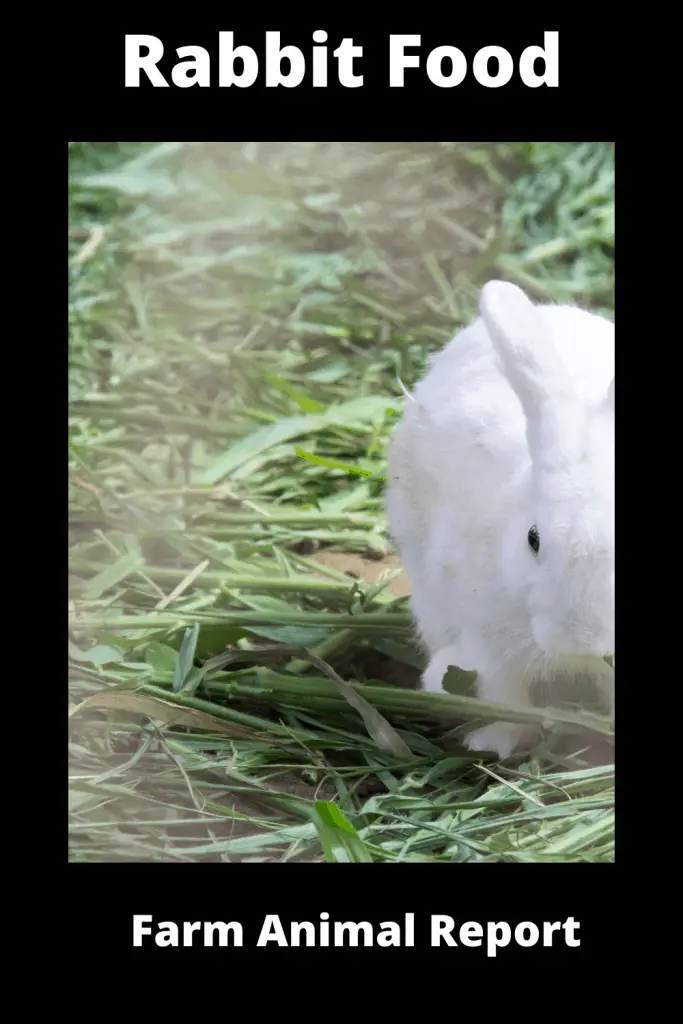
Creep Diets from Zambia AgriBusiness Society – Creep Diets from the research results in faster growth – but the studies show increase feed cost-reducing profitability
| Oats (ground) | 19.0 % |
| Wheat (ground) | 10.0 % |
| Barley (ground) | 10.0 % |
| Wheat bran | 6.4 % |
| Soybean meal | 12.0 % |
| Rapeseed meal | 2.5 % |
| Fish meal | 3.2 % |
| Dehydrated alfalfa meal | 23.7 % |
| Dried brewers yeast | 3.0 % |
| Dried distillers solubles | 4.0 % |
| Dried whey | 4.0 % |
| Molasses | 1.0 % |
| Salt, iodized | 0.5 % |
| Vitamin, mineral premix | 0.775 % |
| DL-methionine | 0.07 % |
| Feed flavor | 0.05 % |
What to Feed Nursing Rabbits
Does that are Nursing will have their own diet to help them with Milk Production. They have extra nutrient needs considering they are feeding themselves and up to 14 baby bunnies.
- 16 – 20 % Crude Protein
- 3 – 5.5 % Fat
- 15 – 20 % Fiber
- 44 – 50 Nitrogen Free Extract
- 4.5 – 6.5 % Ash or Mineral
Diet to Feed Lactating Does
| Alfalfa meal | 40.0 % |
| Ground barley | 20.25 % |
| Wheat mill run | 20.0 % |
| Soybean meal | 14.0 % |
| Molasses | 3.0 % |
| Fat | 1.5 % |
| Dicalcium phosphate | 0.75 % |
| Salt (trace, mineral) | 0.5 % |
| Alfalfa meal | 30.0 % |
| Ground oats | 26.5 % |
| Ground barley | 23.0 % |
| Soybean meal | 16.0 % |
| Molasses | 3.0 % |
| Dicalcium phosphate | 1.0 % |
| Salt (trace, mineralized) | 0.5 % |
What to Feed Meat Rabbits / Maine Organic Farmers Ass
The Formula for Raising Meat Rabbits is that it Takes approximately 20 LBs of Pellets to have 5lbs of Rabbit Meat.
Growth
Barley 24
Oats 25
Linseed meal 20
Alfalfa meal 28.05
Salt 0.2
Vitamins and minerals 2.75
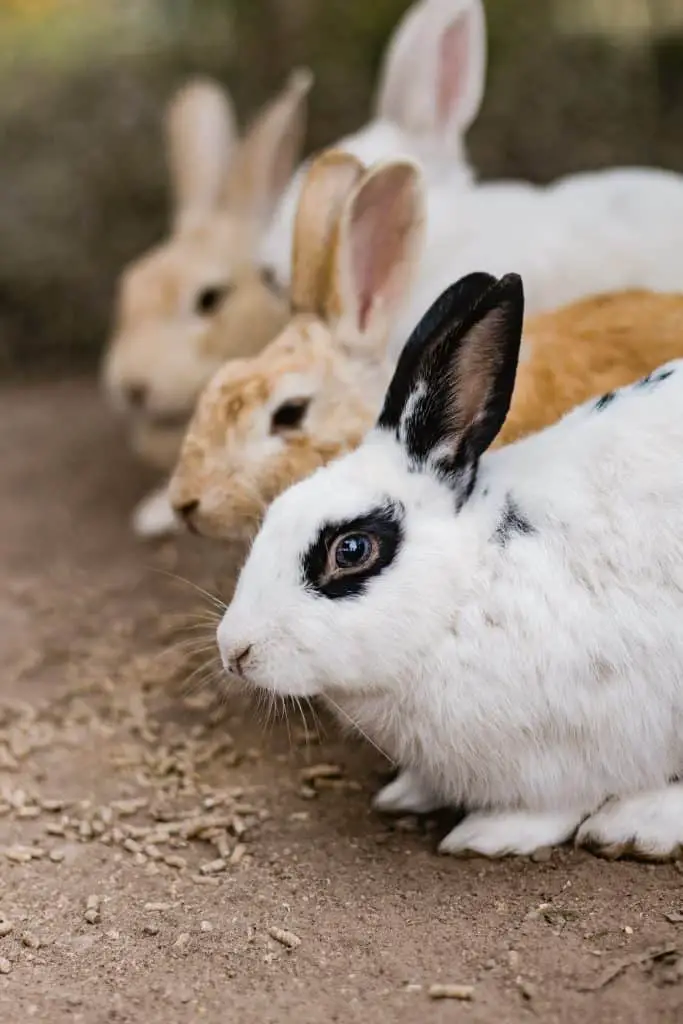
What to Feed Older Rabbits
This is a Diet Formulation for Maintaining Older Rabbits
| Barley | 32 % |
| Oats | 31 % |
| Linseed meal | 9 % |
| Alfalfa meal | 25.05 % |
| Salt | 0.2 % |
| Vitamins and minerals | 2.75 % |
Once Rabbits become older it is wise to watch their weight so that they do not become Obese. Rabbits in the Wild live 1-2 Years, in Pet Situations they can live up too 12 years of age.


